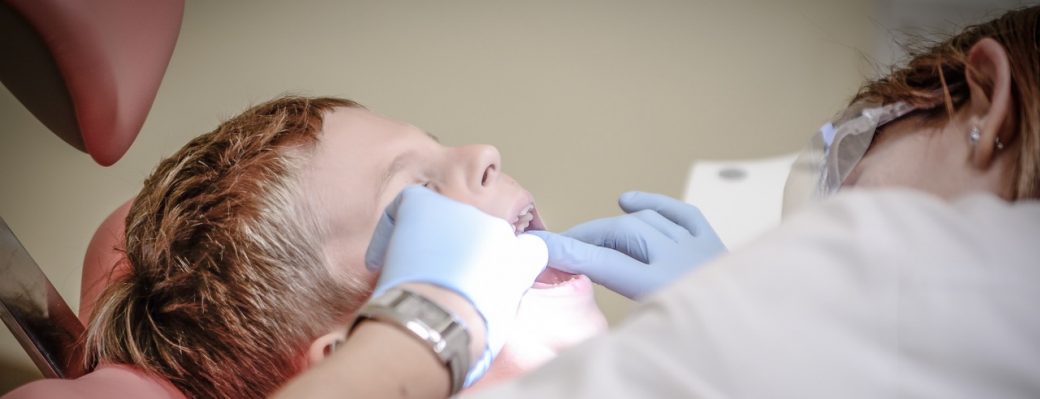We all know that straight teeth can give a beautiful smile. But not everyone is blessed enough to have perfect bite teeth alignment. In fact, a bad bite or misaligned teeth is a very common cosmetic issue. If your teeth are not well aligned or there is a spacing between them, getting orthodontic braces can help improve your teeth’ alignment and even your oral and overall health.
Importance of Perfect Bite
Straight or perfect teeth alignment is much easier to keep clean, unlike if you have bite problems like crooked or misaligned teeth, which are more likely to get food stuck between them. In that case, it will only promote an increased possibility of creating tooth decay and cavities. Additionally, periodontal disease is bound to happen as misaligned or spaced teeth can make gums become inflamed. Straighter teeth can help fit the gums more safely around your teeth and stay healthier. Finally, a perfect bite teeth alignment can cause less strain on your jaws and muscles and is much more able to help improve oral health and overall health.
Perfect Bite Teeth Alignment : What Is the Ideal Bite?
Everybody’s teeth are extraordinary, and there is no normal. Nevertheless, there are some primary aspects that dentists or orthodontists look at when assessing your teeth. Here is what perfect teeth with an ideal bite should look like from various angles.
Front View
A perfect front bite will include upper front teeth arranged corresponding to your lower lip when you smile. When you bite down your teeth, about half to two-thirds of the length of your lower teeth should be effectively noticeable. Too much overlapping would imply you have an overbite. Your upper curve of teeth should be somewhat more extensive than your bottom arch, and your top teeth should all be positioned right outside of your base teeth when you bite down.
Arch View
The arch view or the view from above is the thing that you notice when you open your mouth wide. Also, it is when you low up at the bottoms of the higher teeth or down at the highest points of the bottom teeth. Once you look at this view, the teeth should be lined up with a nice curve. All teeth should contact with no overlapping or spacing between them to be considered perfect teeth.
Side View
 For the side view of the teeth, the backs of the upper front teeth should rest tenderly before your base teeth. If the ends of the upper teeth are biting down straightforwardly down or behind the edges of the base incisors, this bite problem is called an underbite. Top teeth should not stand out excessively far before the bottom teeth. Because if they do, this is another form of a bite issue known as excess overjet. When looking at the side view, the entirety of your top teeth should lie between the bottom teeth, similar to gears fit together in a wheel.
For the side view of the teeth, the backs of the upper front teeth should rest tenderly before your base teeth. If the ends of the upper teeth are biting down straightforwardly down or behind the edges of the base incisors, this bite problem is called an underbite. Top teeth should not stand out excessively far before the bottom teeth. Because if they do, this is another form of a bite issue known as excess overjet. When looking at the side view, the entirety of your top teeth should lie between the bottom teeth, similar to gears fit together in a wheel.
These key features are the ideal norm to determine if you have perfect bite teeth alignment. However, crooked teeth or malocclusion affect many individuals all over the world. The effects of malocclusion can worsen over time and may unfavorably influence your overall health.
Perfect Bite Teeth Alignment : Common Type of Bite Problems
There are a couple of various things a dentist or orthodontist looks at when evaluating a person’s bite. At times, issues with the teeth and jaw can be barely noticeable. Here is a look at the common bite problems that can happen.
Crowding
Dental crowding also called crowded teeth or overcrowding, occurs when there is not adequate room in the mouth for lasting teeth to fill in straight. Therefore, individuals with this kind of bite problem or malocclusion have crooked teeth that overlap one another.
Spacing or Diastema
Diastema is the space or gap between the teeth. These spaces can develop any place in the mouth yet are sometimes visible between the two upper front teeth. This form influences both children and adults. In children, gaps may vanish once their lasting teeth fill in.
Overbite
An overbite or deep bite is how far down the anterior teeth cover before the lower teeth. The normal overbite is around 3-5 mm. Anything more than 5 mm is viewed as a deeper bite and may start to infringe on the gum tissue and cause other complications.
Overjet
This condition is how far the top anterior teeth jet straight out from the bottom front teeth. Preferably, an overjet is about 1.5 mm to 2.5 mm. If the condition is too much, it can affect your speech and how your lips close together.
Crossbite
A crossbite happens when the lower teeth overlap the upper teeth and is nearer to the lips and cheek. It could be only one tooth, numerous teeth, front teeth, or one side of the mouth.
Underbite
An underbite, also called anterior crossbite, is where all the lower front teeth are before the upper front teeth. It can likewise be known as a Class 3 malocclusion.
Open bite
An open bite can happen any place in the mouth. It is when you bite down, and your teeth do not touch together. People with this condition can find it troublesome to bite into things.
Edge-to-Edge
This condition is when the upper anterior teeth are straightforwardly on top of the base front teeth when they bite together. The edge of the upper teeth touching the edge of the base teeth.
Orthodontic treatments and other treatment options like surgical procedures may sometimes necessary, depending on your bite problems. The most common issue with these conditions is more on the cosmetic concern. However, these malocclusions can also influence your bite, making unnatural stress and pressure, leading to untimely wear. Teeth that are subject to excessive force can cause chipping and nudges at the gumline. After some time, it may also cause worn down teeth and fracture at the edges of teeth. Moreover, a bad bite may produce an offensive force on the jaw joints, leading to pain in the jaw, earache, and even headaches.
Orthodontic Treatments for Perfect Bite Teeth Alignment
Even though you do not have the ideal bite now, several treatment options are available to help you achieve the straight, perfect smile you want. Achieving your perfect smile implies planning a system that will deliver the objectives that you and your dentist or orthodontist discuss for your specific circumstance. Let us take a look at some of the popular orthodontic treatments for straighter teeth.
Aligners
Clear aligners have become a well-known treatment for patients with misaligned teeth and bite issues since they are simpler to wear and adapt to for most individuals. They are clear, so nobody knows you are wearing them. Also, you can remove them when you brush your teeth, eat food you like, or when you drink anything but water.
Braces
 Orthodontic braces are frequently considered as the more conventional treatment for a perfect bite and straight teeth.
Orthodontic braces are frequently considered as the more conventional treatment for a perfect bite and straight teeth.
Since numerous adults manage bone loss and tooth loss when they come in for braces, it is fundamental to have an intensive assessment before pushing ahead. In any case, braces for grownups have the potential to be very effective. Many adult patients choose dental braces with clear brackets. This kind of braces offers the accuracy of devices with a more esthetic look.
Moreover, braces are a popular orthodontic treatment option for children. Early treatment is vital for incredible outcomes, especially in kids who have restricted space for their permanent teeth to fill in or irregular dental curves. Early orthodontic procedure and single-stage orthodontic treatment choices are both accessible. Several pre-teen and adolescent patients opt for regular braces and love changing the colors of their elastic bands every month.


